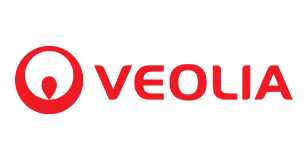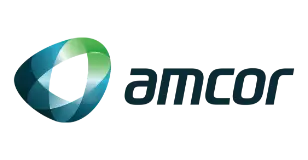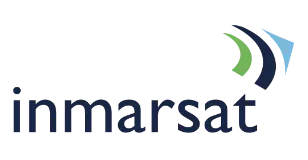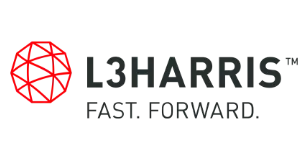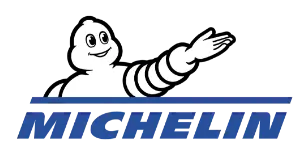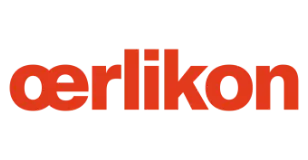
APAC Non-Invasive Ventilators Market Research Report: Forecast (2025-2030)
APAC Non-Invasive Ventilators Market - By Components (Non Disposable, Disposable) By Pressure (Positive, Negative) By Application ( Chronic Obstructive Pulmonary Disease, Asthma, R...espiratory Distress Syndrome, Pneumonia, Sleep Apnea, Resuscitation, Cardiogenic Pulmonary Edema, Others) By End-User (Critical Care, NICU Care, Transport (Ambulance), Home Care Settings, Others) Read more
- Healthcare
- Apr 2025
- Pages 164
- Report Format: PDF, Excel, PPT
Market Insights & Analysis: APAC Non-Invasive Ventilators Market (2025-30):
The APAC Non-Invasive Ventilators Market size was valued at around USD532 million in 2024 and is projected to reach USD903 million by 2030. Along with this, the market is estimated to grow at a CAGR of around 11.11% during the forecast period, i.e., 2025-30.
The main factors that can be held responsible for the growth of the market include rising demand for healthcare facilities, an increase in air pollution causing growth in respiratory diseases, changes in standardized guidelines for medical devices and treatment procedures, cost competitiveness of non-invasive ventilators when compared to invasive ventilators and continuous investments in medical infrastructural development such as hospitals, specialty clinics, medical research institutes, etc., across the region. Healthcare institutions in APAC are increasingly adopting non-invasive ventilators to manage patients with conditions like acute respiratory distress syndrome (ARDS), heart failure, and post-surgical recovery.
| Report Coverage | Details |
|---|---|
| Historical Years | 2020-23 |
|
Base Years
|
2024
|
|
Forecast Years
|
2025-30
|
| Market Value in 2024 | USD 532 Million |
| Market Value by 2030 | USD 903 Million |
| CAGR (2025-30) | 11.11% |
| Leading Region | China |
| Top Key Players | Teleflex Incorporated, Vyaire Medicals, Dragerwerk AG & Co., Medtronic plc, Philips, ResMed, Inc., O-Two Medical Technologies Inc., Dimar, Intersurgical Ltd., Vygon, Vapotherm, Inc., and others. |
| Key Report Highlights |
|
*Boost strategic growth with in-depth market analysis - Get a free sample preview today!
Air pollution is a major concern in countries in the Asia-Pacific, primarily China, India, Southeast Asia, etc., due to massive construction and the presence of a robust manufacturing ecosystem. The Air Quality Index of countries such as India, China, Thailand, and Bangladesh crossed 160, whereas that of Nepal crossed 220 in the first quarter of 2025. Exposure to such degraded air increases the health risks and mortality rate. Thus increasing the requirement of ventilators in the region.
As per the World Health Organization (WHO), in 2023, more than 210 million people in China and India are suffering from Chronic Obstructive Pulmonary Disease (COPD). As per IQAir, in 2024, 15 Asian cities are among the 20 most polluted cities across the globe. Cities such as Karachi, New Delhi, Beijing, Dhaka, Lahore, Bangkok, etc., are among the global cities with extremely high levels of air pollution. Eventually, with the growing respiratory diseases in APAC countries, sales of non-invasive ventilators are outperforming in the region.
The expansion of the healthcare infrastructure is among the major factors that have increased the demand for ventilators. The government policies, coupled with research and innovation in emerging countries like India, Southeast Asia, etc., are bridging the gap between the medical needs of patients and healthcare service providers. For instance, the Indian Space Research Organization (ISRO) developed a ventilator system powered by gas referred to as “Space Ventilator Aided System for Trauma Assistance (SVASTA)” in 2021 for a basic ventilation facility. “SwathVayu” is another bi-level positive airway pressure non-invasive ventilator developed by CSIR-NAL scientists in 2021 with additional features to treat damaged lungs.
Thus, rising pollution and an increase in research and development initiatives from the governments of various countries have boosted demand for non-invasive ventilators in the APAC region.

APAC Non-Invasive Ventilators Market Driver:
Increase in Respiratory Disorders Due to High Construction Activities in the Region – Acute respiratory infections leading to damaged lungs have surged in the Asia-Pacific region due to a rise in industrial activities such as mining and construction. To increase energy production for the growth of the economy, governments in this region are investing heavily in the construction and mining sectors. China has one of the largest mining sectors across the globe. Moreover, the construction industry of China is the largest in the world, consuming 1/3rd of the global cement production. Eventually, due to air pollution from construction, manufacturing, and mining resulted in 8.2% of the Chinese adults suffering from Chronic Obstructive Pulmonary Disease (COPD).
Moreover, the drilling activities by the Indian Mineral Exploration Corporation Limited had increased by nearly 33% in 2024 from 2023. This has caused the longer exposure of miners to dust, resulting in permanent damage to the lungs, such as inflammation, silicosis, coal workers’ pneumoconiosis, dust-related diffuse fibrosis, and black lung disease. Thus, all these conditions have raised the respiratory cases in the region as the number of patients admitted to the hospitals for treatment has increased significantly.
This pushes the hospitals to increase the number of non-invasive ventilators for providing oxygen support since they are less complicated and do not require a tube to be inserted into the trachea as happens in the case of traditional ventilators, and thus facilitates the demand for non-invasive ventilators in the region.
APAC Non-Invasive Ventilators Market Opportunity:
Increase in Investments for Expanding Healthcare Infrastructure – The healthcare sector stands to be the fastest-growing sector in the Asia-Pacific region, owing to numerous private and public partnerships that are underway, facilitating the expansion of healthcare centers and services across the region. As per the Economic and Social Commission for Asia-Pacific, 2024, FDI inflows in the region in the health care sector are bound to rise from USD2.32 billion in 2022 to USD18.2 billion in 2027, with investments flowing from France, Switzerland, Japan, etc.
As per the Health Ministry of Indonesia, 2023, an investment of more than USD1.3 billion in the healthcare sector for the development of medical centers, such as primary laboratories, nursing units, and hospitals, and equipping them with the machinery by the end of 2029. As per CBRE, 2022, India would need additional healthcare space of 1.3 billion sq. ft. by 2030 to provide efficient medical services to its citizens. Similarly, as per NITI Aayog, Government of India, the country is likely to witness an investment of around USD 32 billion by 2030 in the hospital space. These investments for the expansion of medical infrastructure in the APAC region provide significant growth opportunities for Non-invasive manufacturers to expand their business in the region.
APAC Non-Invasive Ventilators Market Challenge:
High Cost of Non-Invasive Ventilators Hampers the Market Growth – The advancements and regular research have increased the initial cost of ventilators. For instance, the average price of a unit of 150V non-invasive ventilator is more than 2,500 in the region, which is relatively expensive. And, the majority of the population in the region falls in middle and lower income brackets with relatively small budgets for healthcare expenditure. Eventually, the healthcare institutions in the region are more focused on providing services to the middle or lower-income population.
The overall cost of the non-invasive ventilators tends to remain high due to the microsensors and processors installed in them. Thus, the regular maintenance of this device and its sensors further increases the cost of the machinery. Hence, to remain cost-efficient, consumers do not purchase it, resulting in lower sales of non-invasive ventilators, thus hampering the growth of the market.
APAC Non-Invasive Ventilators Market Trend:
Integration of AI and Advancements in Non-Invasive Ventilators – The frequent research and development in material sciences, technologies, and methodologies have improved the functioning of the non-invasive ventilators. The evolution in materials and the engineering of the masks have made them adaptive for individuals of all age groups. Moreover, the integration of AI in the mechanism of non-invasive ventilators has resulted in the development of an automated monitoring system. In this system, several algorithms are pre-installed in the detectors, and accordingly adjust the pressure of the supplied oxygen.
Some companies, such as ResMed, Philips, etc., have inculcated this system and launched a wide range of products like DreamStation, AirSense, and others. This integration aids in the speedy recovery of the patient, hence increasing the survival rate in the region. Thus, these advancements and innovations are booming the non-invasive ventilator market in the region.
APAC Non-Invasive Ventilators Market (2025-30): Segmentation Analysis
The APAC Non-Invasive Ventilators Market study of MarkNtel Advisors evaluates & highlights the major trends & influencing factors in each segment. It includes predictions for the period 2025–2030 at the global level. Based on the analysis, the market has been further classified as:
Based on Application:
- Chronic Obstructive Pulmonary Disease (COPD)
- Asthma
- Respiratory Distress Syndrome
- Pneumonia
- Sleep Apnea
- Resuscitation
- Cardiogenic Pulmonary Edema
- Others
Based on application, Chronic Obstructive Pulmonary Disease (COPD) holds the largest market share of around 39%. This is due to an increase in the cases reported of COPD in the Asia-Pacific region, with it being the fourth leading cause of death. It is due to the intake of low-quality air, smoke, etc., which causes damage to the lungs and blocks the windpipe with mucus, thus preventing the swift inflow and outflow of air. Thus, to support respiratory activities, oxygen support is provided to the patients.
Moreover, COPD is a gradually intensifying disease, it does not have a cure. However, it can be treated by using inhalers, bronchodilators, and others. These systems work on the inhalation of medicines directly to the lungs via air. Thus, this increases the consumption of non-invasive ventilators among COPD patients in the region and facilitates a higher market share held by COPD in the Non-Invasive Ventilators Market in the APAC.
Based on Pressure:
-
Positive
- Continuous Positive Airway Pressure (CPAP)
- Bi-level Positive Airway Pressure (BiPAP)
- Pressure Support Ventilation (PSV)
- Adaptive Support Ventilation (ASV)
- Others
- Negative
The Ventilators with Bi-level Positive Airway Pressure (BiPAP) have around 52% of the market value. This market share is due to its technological advancement and operational efficiency. Advancements in techniques, such as pressure sensors and control algorithms, have resulted in the development of the BiPAP. In Bi-level Positive Airway Pressure ventilators, the breathing support acts on two different levels of pressure. A higher pressure is used while inhaling the air, and a relatively lower pressure is used during the exhaling process.
This pressure is automated or timed, depending upon the comfort of the patient. BiPAP also prefers the comfort of the patients over the conventional Continuous Positive Airway Pressure (CPAP), which provides constant pressure throughout. Hence, Bi-level Positive Airway Pressure is more in demand, thus raising its market share.
APAC Non-Invasive Ventilators Market (2025-30): Regional Projections
- China
- Japan
- India
- South Korea
- Australia
- Rest of Asia-Pacific
China has the fastest-growing non-invasive ventilators market with around 43% share in the region. This is due to the expansion of the healthcare structure, a rise in respiratory diseases, the large population, government guidelines, etc. In recent years, a surge in respiratory disease has been observed due to air pollution and smoking. Air pollution has increased notably in China due to its large manufacturing hub, which attracts numerous manufacturers to the country. The manufacturing and processing units pollute the air by releasing toxic wastes and gases into the atmosphere. The intake of such toxins from the atmosphere damages the lungs and causes respiratory disorders. Hence, in the treatment of such diseases, ventilators are required.
Moreover, the government, in the form of policies and schemes, is facilitating the growth of the medical sector in the country. The Healthy China 2030 plan of the Chinese government aims to support and expand the healthcare sector in the nation by expanding the healthcare units, which in turn require well-equipped machinery for swift operations. This generates the need for non-invasive ventilators for the treatment of respiratory diseases in the nation. Additionally, the change in the foreign investment policy in 2024 promotes non-foreign investments in healthcare, which has further fuelled the expansion of the healthcare sector, including the demand for non-invasive ventilators in China.
APAC Non-Invasive Ventilators Industry Recent Development:
-
2025: Dragerwerk AG & Co. launched its NIOSH-certified ProAir, an advanced closed-circuit breathing apparatus specifically designed to provide oxygen for four hours continuously in extreme conditions for Federal Government Operations.
-
2024: Vapotherm, Inc., announced to launch of its new product, Access365, a home ventilation solution, with the motive to reduce the regular clinical visits at MEDTRADE.
Gain a Competitive Edge with Our APAC Non-Invasive Ventilators Market Report
-
APAC Non-Invasive Ventilators Market by MarkNtel Advisors provides a detailed & thorough analysis of market size & share, growth rate, competitive landscape, and key players. This comprehensive analysis helps businesses gain a holistic understanding of the market dynamics & make informed decisions.
-
This report also highlights current market trends & future projections, allowing businesses to identify emerging opportunities & potential challenges. By understanding market forecasts, companies can align their strategies & stay ahead of the competition.
- The APAC Non-Invasive Ventilators Market Report aids in assessing & mitigating risks associated with entering or operating in the market. By understanding market dynamics, regulatory frameworks, and potential challenges, businesses can develop strategies to minimize risks & optimize their operations
Frequently Asked Questions
- Market Segmentation
- Introduction
- Product Definition
- Research Process
- Assumptions
- Executive Summary
- APAC Non-Invasive Ventilators Market Trends & Deployments
- APAC Non-Invasive Ventilators Market Dynamics
- Growth Drivers
- Challenges
- APAC Non-Invasive Ventilators Market Opportunities & Hotspots
- APAC Non-Invasive Ventilators Market Value Chain Analysis
- APAC Non-Invasive Ventilators Market Regulations and Policy
- APAC Non-Invasive Ventilators Market Outlook, 2020-2030
- Market Size & Analysis
- By Revenues (USD Million)
- Market Share & Analysis
- By Components
- Non Disposable - Market Size & Forecast 2020-2030, USD Million
- Non-Invasive PPV - Market Size & Forecast 2020-2030, USD Million
- High Flow Nasal Cannula O2 Delivery -Market Size & Forecast 2020-2030, USD Million
- Others-Market Size & Forecast 2020-2030, USD Million
- Disposable - Market Size & Forecast 2020-2030, USD Million
- Mask - Market Size & Forecast 2020-2030, USD Million
- Humidifiers -Market Size & Forecast 2020-2030, USD Million
- PEEP Values -Market Size & Forecast 2020-2030, USD Million
- Others (tubes, connectors, etc.)-Market Size & Forecast 2020-2030, USD Million
- Non Disposable - Market Size & Forecast 2020-2030, USD Million
- By Pressure
- Positive- Market Size & Forecast 2020-2030, USD Million
- Continuous Positive Airway Pressure (CPAP)- Market Size & Forecast 2020-2030, USD Million
- Bilevel Positive Pressure (BiPAP)- Market Size & Forecast 2020-2030, USD Million
- Pressure Support Ventilation (PSV)- Market Size & Forecast 2020-2030, USD Million
- Adaptive Support Ventilation (ASV)- Market Size & Forecast 2020-2030, USD Million
- Others- Market Size & Forecast 2020-2030, USD Million
- Negative- Market Size & Forecast 2020-2030, USD Million
- Positive- Market Size & Forecast 2020-2030, USD Million
- By Application
- Chronic Obstructive Pulmonary Disease- Market Size & Forecast 2020-2030, USD Million
- Asthma- Market Size & Forecast 2020-2030, USD Million
- Respiratory Distress Syndrome- Market Size & Forecast 2020-2030, USD Million
- Pneumonia- Market Size & Forecast 2020-2030, USD Million
- Sleep Apnea- Market Size & Forecast 2020-2030, USD Million
- Resuscitation- Market Size & Forecast 2020-2030, USD Million
- Cardiogenic Pulmonary Edema- Market Size & Forecast 2020-2030, USD Million
- Others- Market Size & Forecast 2020-2030, USD Million
- By End-User
- Critical Care-Market Size & Forecast 2020-2030, USD Million
- NICU Care-Market Size & Forecast 2020-2030, USD Million
- Transport (Ambulance) -Market Size & Forecast 2020-2030, USD Million
- Home Care Settings-Market Size & Forecast 2020-2030, USD Million
- Others-Market Size & Forecast 2020-2030, USD Million
- By Country
- China
- Japan
- India
- South Korea
- Australia
- Rest of Asia-Pacific
- By Company
- Competition Characteristics
- Market Share and Analysis
- By Components
- Market Size & Analysis
- China Non-Invasive Ventilators Market Outlook, 2020-2030
- Market Size & Analysis
- By Revenues (USD Million)
- Market Share & Analysis
- By Component- Market Size & Forecast 2020-2030, USD Million
- By Pressure- Market Size & Forecast 2020-2030, USD Million
- By Application-Market Size & Forecast 2020-2030, USD Million
- By End-User-Market Size & Forecast 2020-2030, USD Million
- Market Size & Analysis
- Japan Non-Invasive Ventilators Market Outlook, 2020-2030
- Market Size & Analysis
- By Revenues (USD Million)
- Market Share & Analysis
- By Component- Market Size & Forecast 2020-2030, USD Million
- By Pressure- Market Size & Forecast 2020-2030, USD Million
- By Application-Market Size & Forecast 2020-2030, USD Million
- By End-User-Market Size & Forecast 2020-2030, USD Million
- Market Size & Analysis
- India Non-Invasive Ventilators Market Outlook, 2020-2030
- Market Size & Analysis
- By Revenues (USD Million)
- Market Share & Analysis
- By Component- Market Size & Forecast 2020-2030, USD Million
- By Pressure- Market Size & Forecast 2020-2030, USD Million
- By Application-Market Size & Forecast 2020-2030, USD Million
- By End-User-Market Size & Forecast 2020-2030, USD Million
- Market Size & Analysis
- South Korea Non-Invasive Ventilators Market Outlook, 2020-2030
- Market Size & Analysis
- By Revenues (USD Million)
- Market Share & Analysis
- By Component- Market Size & Forecast 2020-2030, USD Million
- By Pressure- Market Size & Forecast 2020-2030, USD Million
- By Application-Market Size & Forecast 2020-2030, USD Million
- By End-User-Market Size & Forecast 2020-2030, USD Million
- Market Size & Analysis
- Australia Non-Invasive Ventilators Market Outlook, 2020-2030
- Market Size & Analysis
- By Revenues (USD Million)
- Market Share & Analysis
- By Component- Market Size & Forecast 2020-2030, USD Million
- By Pressure- Market Size & Forecast 2020-2030, USD Million
- By Application-Market Size & Forecast 2020-2030, USD Million
- By End-User-Market Size & Forecast 2020-2030, USD Million
- Market Size & Analysis
- APAC Non-Invasive Ventilators Market Strategic Imperatives for Growth & Success
- Competition Outlook
- Company Profiles
- Teleflex Incorporated
- Business Description
- Product Portfolio
- Strategic Alliances or Partnerships
- Recent Deployments
- Financial Details
- Others
- Vyaire Medicals
- Business Description
- Product Portfolio
- Strategic Alliances or Partnerships
- Recent Deployments
- Financial Details
- Others
- Dragerwerk AG & Co.
- Business Description
- Product Portfolio
- Strategic Alliances or Partnerships
- Recent Deployments
- Financial Details
- Others
- Medtronic plc
- Business Description
- Product Portfolio
- Strategic Alliances or Partnerships
- Recent Deployments
- Financial Details
- Others
- Philips
- Business Description
- Product Portfolio
- Strategic Alliances or Partnerships
- Recent Deployments
- Financial Details
- Others
- ResMed, Inc.
- Business Description
- Product Portfolio
- Strategic Alliances or Partnerships
- Recent Deployments
- Financial Details
- Others
- O-Two Medical Technologies Inc.
- Business Description
- Product Portfolio
- Strategic Alliances or Partnerships
- Recent Deployments
- Financial Details
- Others
- Dimar
- Business Description
- Product Portfolio
- Strategic Alliances or Partnerships
- Recent Deployments
- Financial Details
- Others
- Intersurgical Ltd.
- Business Description
- Product Portfolio
- Strategic Alliances or Partnerships
- Recent Deployments
- Financial Details
- Others
- Vygon
- Business Description
- Product Portfolio
- Strategic Alliances or Partnerships
- Recent Deployments
- Financial Details
- Others
- Vapotherm, Inc.
- Business Description
- Product Portfolio
- Strategic Alliances or Partnerships
- Recent Deployments
- Financial Details
- Others
- Others
- Teleflex Incorporated
- Company Profiles
- Disclaimer
MarkNtel Advisors follows a robust and iterative research methodology designed to ensure maximum accuracy and minimize deviation in market estimates and forecasts. Our approach combines both bottom-up and top-down techniques to effectively segment and quantify various aspects of the market. A consistent feature across all our research reports is data triangulation, which examines the market from three distinct perspectives to validate findings. Key components of our research process include:
1. Scope & Research Design At the outset, MarkNtel Advisors define the research objectives and formulate pertinent questions. This phase involves determining the type of research—qualitative or quantitative—and designing a methodology that outlines data collection methods, target demographics, and analytical tools. They also establish timelines and budgets to ensure the research aligns with client goals.
2. Sample Selection and Data Collection In this stage, the firm identifies the target audience and determines the appropriate sample size to ensure representativeness. They employ various sampling methods, such as random or stratified sampling, based on the research objectives. Data collection is carried out using tools like surveys, interviews, and observations, ensuring the gathered data is reliable and relevant.
3. Data Analysis and Validation Once data is collected, MarkNtel Advisors undertake a rigorous analysis process. This includes cleaning the data to remove inconsistencies, employing statistical software for quantitative analysis, and thematic analysis for qualitative data. Validation steps are taken to ensure the accuracy and reliability of the findings, minimizing biases and errors.
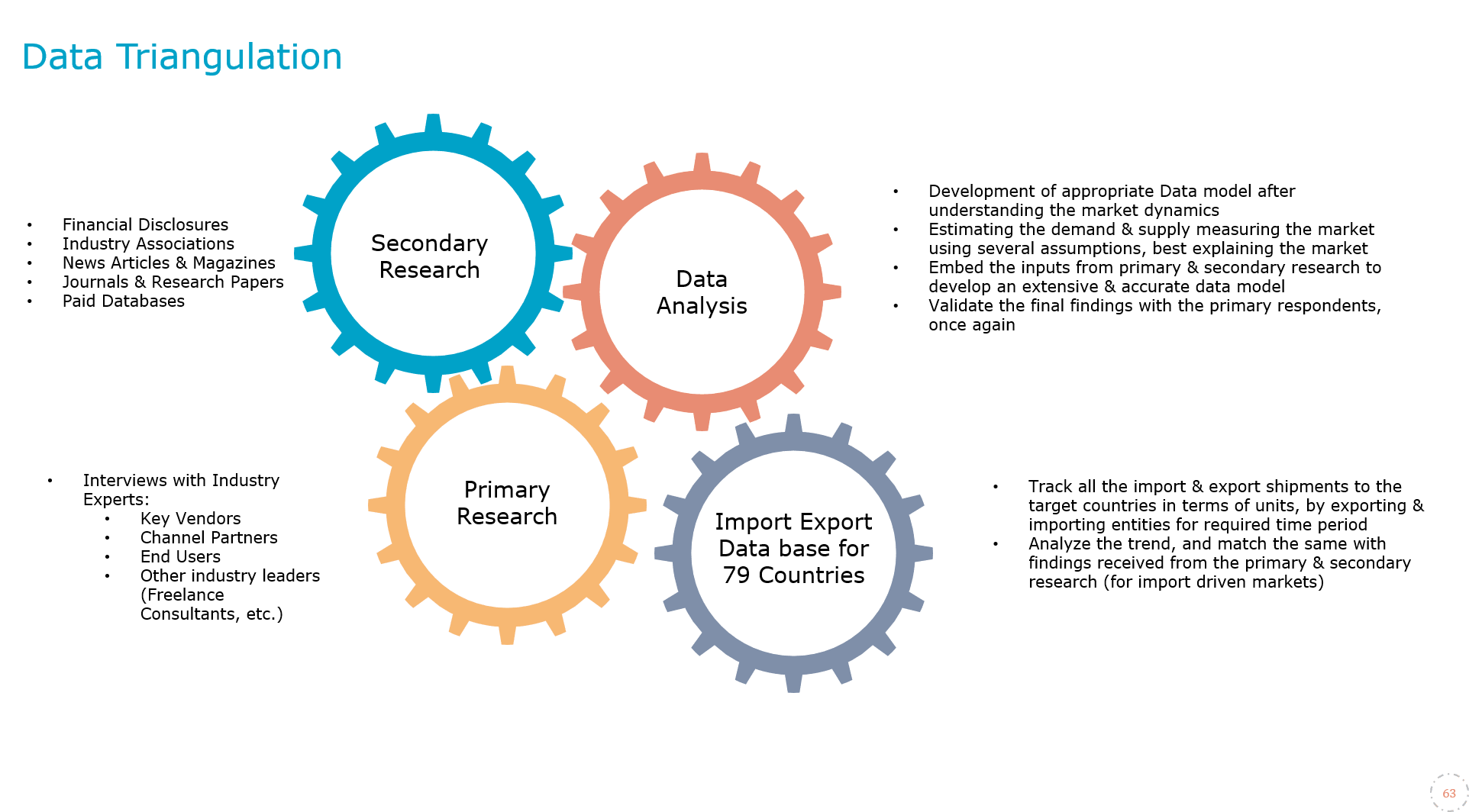
4. Data Forecast and FinalizationThe final phase involves forecasting future market trends based on the analyzed data. MarkNtel Advisors utilize predictive modeling and time series analysis to anticipate market behaviors. The insights are then compiled into comprehensive reports, featuring visual aids like charts and graphs, and include strategic recommendations to inform client decision-making

